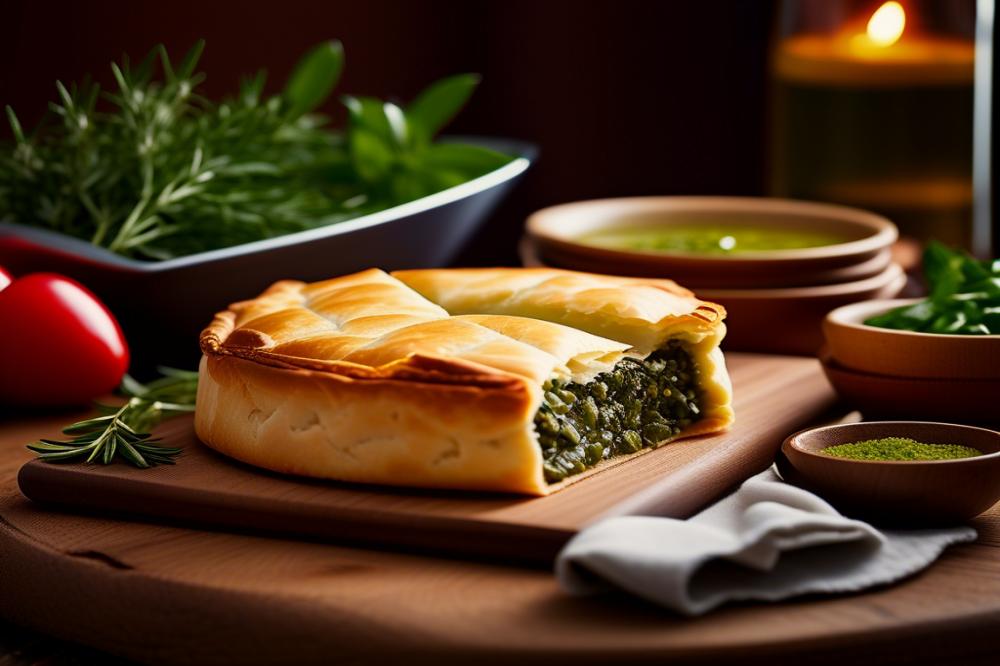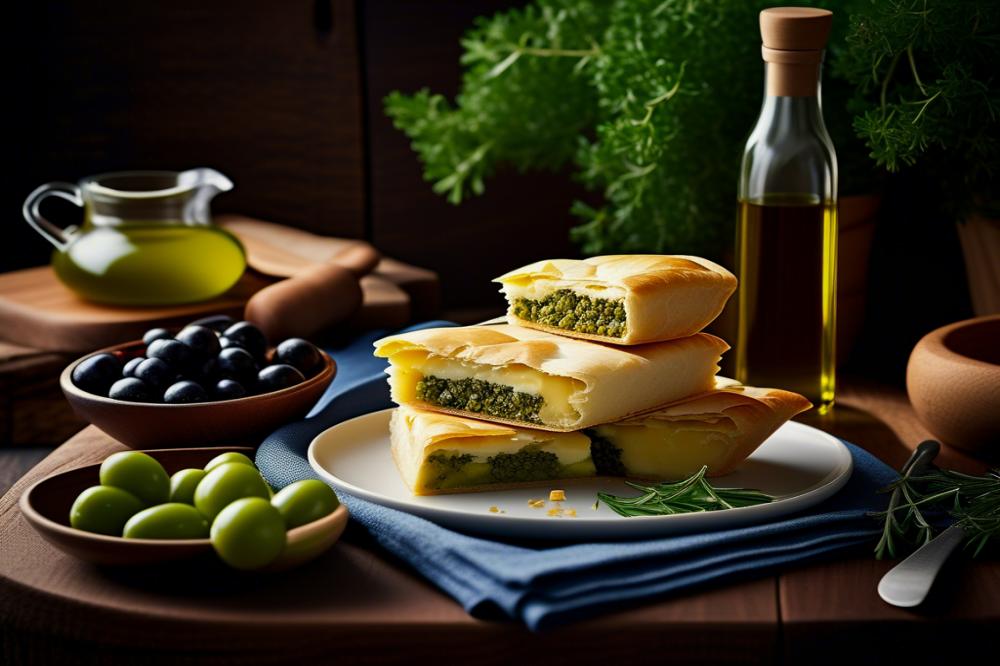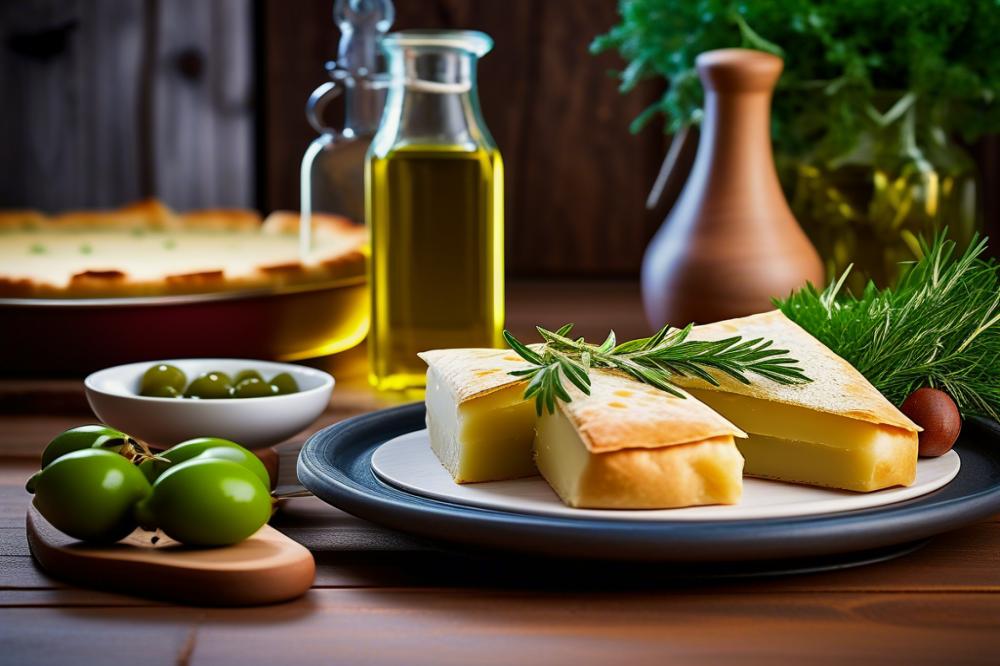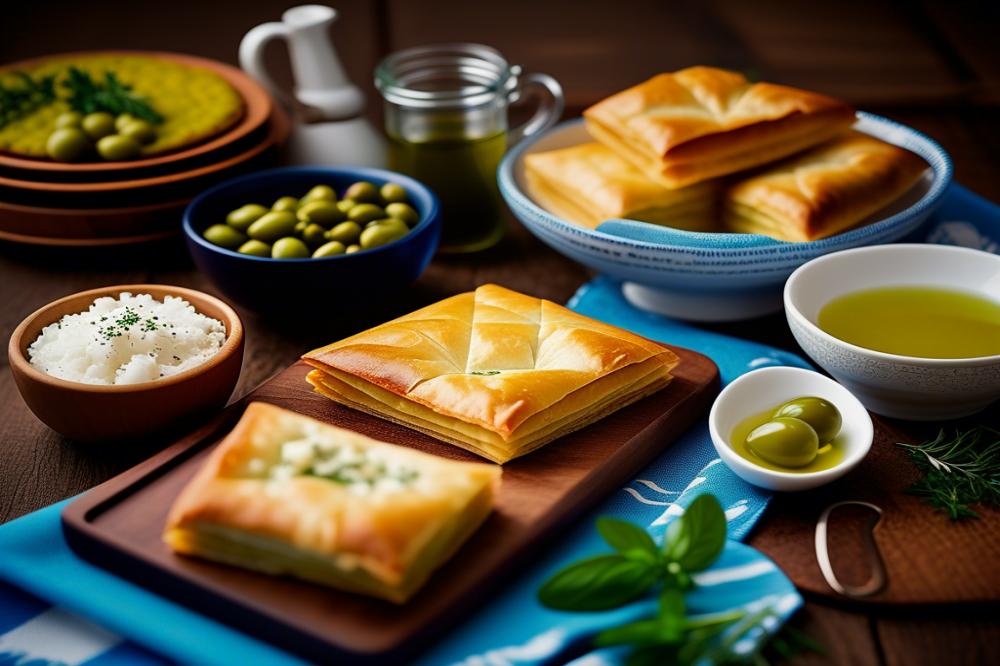The Art of Baking Greek Spanakopita and Tiropita
Greek culinary traditions are rich and vibrant, reflecting the country’s history and culture. Food plays a central role in gatherings, celebrations, and everyday life in Greece. Recipes pass down through generations, creating a link between the past and the present. Among these cherished dishes, Spanakopita and Tiropita stand out as beloved examples of Greek pastry.
These two savory snacks represent not just nourishment but also the heart of Greek hospitality. Spanakopita, a delightful spinach pie, often graces tables during family meals or festive occasions. On the other hand, Tiropita showcases a delicious cheese pie that brings comfort and joy to many. Both dishes highlight the importance of sharing food and traditions within Greek culture.
Key ingredients unite these pastries, making them special. phyllo dough forms the flaky, golden crust that envelopes each filling. For Spanakopita, fresh spinach and flavorful herbs come together to create a savory experience. The use of feta cheese enriches Tiropita, giving it a unique and distinct taste. Olive oil serves as a delightful element, adding depth and moisture to the pastries during baking. Mastering the baking techniques involved in creating these treats can help anyone replicate the joy found in Greek kitchens. The combination of the Mediterranean cuisine flavors makes both dishes irresistible, inviting everyone to enjoy a taste of Greece.
The Signature Dish: Spanakopita

Spanakopita is a beloved savory spinach pie well known in Greek cuisine. This dish features layers of flaky phyllo dough that cradle a flavorful mixture of spinach and cheese. Many consider it a staple among Greek pastries, enjoyed by people of all ages.
Key ingredients for this dish are simple yet impactful. Fresh spinach provides a vibrant green hue and a healthy touch. Crumbled feta cheese adds a rich, creamy texture that makes each bite satisfying. Herbs, often dill or parsley, elevate the flavors, creating a delightful taste experience. Olive oil plays a crucial role as well. It bastes the layers of phyllo, promoting crispiness and enhancing every bite’s overall flavor.
There are many variations on the classic recipe. Some people might add sautéed onions or scallions to increase the depth of flavor. Other recipes may incorporate additional cheeses, like ricotta, for a creamier filling. A few adventurous cooks even mix in artichokes or mushrooms, broadening the dish’s appeal. These twists on the traditional recipe show just how versatile this savory snack can be.
Using olive oil during the baking process not only helps crisp the pastry but also adds richness. Applying it carefully to each layer of phyllo dough unlocks its potential for golden perfection. The oil’s flavor rounds out the dish, harmonizing beautifully with the spinach and feta. Mastering these baking techniques can make a humble spinach pie truly unforgettable.
Tiropita: The Cheese Counterpart

Tiropita stands out as the delicious cheese pie variation of traditional Greek pastries. This savory delight traditionally combines flaky phyllo dough with a tasty filling, making it a favorite among many. This dish is a staple in Mediterranean cuisine, often served as a snack or appetizer. People enjoy tiropita for its comforting flavors and delightful textures.
Essentially, the ingredients of tiropita center around quality cheeses like feta, ricotta, or even a blend. Fresh herbs like dill or parsley add a fragrant touch. Olive oil is crucial as it helps achieve a golden, crispy crust. Together, these ingredients create a rich and flavorful pie. The mixture of cheeses can either be tangy, creamy, or a bit peppery, depending on the selection.
When comparing tiropita to its spinach counterpart, differences in taste and texture emerge vividly. While spanakopita boasts the earthy flavors of spinach and herbs, tiropita focuses on the savory richness of cheese. The texture of the cheese filling is often creamier and smoother compared to the more layered spinach mixture. This distinction makes each pie special in its own right.
For adventurous bakers, there are many creative twists to traditional tiropita recipes. Some opt to incorporate additional ingredients like sun-dried tomatoes or olives, giving the pie a Mediterranean flair. Others might experiment with different types of cheeses for a unique filling. Adding a dash of spices can elevate the flavor profile further, making for a memorable dish.
This Greek pastry not only offers versatility but also encourages creativity in the kitchen. Baking techniques used for tiropita can vary, from folding to layering. Each method has its own charm and can influence the final presentation. The result is a delectable cheese-filled joy that feels like a warm embrace in every bite.
Mastering Phyllo Dough

Phyllo dough is a crucial element in many Greek pastries, such as spanakopita and tiropita. This thin pastry creates a delightful crunch when baked. Understanding its characteristics leads to better results in the kitchen. The delicate layers of phyllo form the foundation for savory snacks filled with spinach, feta cheese, and a mix of herbs.
Handling and Preparing Phyllo Dough
To work with phyllo, start by gathering your ingredients and tools. You will need your package of phyllo dough, a clean workspace, and a brush for applying olive oil. Thaw the dough in the refrigerator overnight or for a few hours at room temperature. This prevents tears when unrolling it. Once you’re ready, gently unroll the sheets on a flat surface. Keep the unused sheets covered with a damp cloth to maintain moisture.
Next, brush a layer of olive oil on the bottom of your baking dish. Lay down the first sheet of phyllo and lightly brush it again. Continue layering sheets, brushing oil between each one, until you’ve reached your desired thickness. For a compact filling, aim for at least six layers. Once your base is ready, add your spinach or cheese mixture, and fold the phyllo over the filling. This method helps create pockets of goodness that seal in flavors.
Common Mistakes to Avoid
Many people struggle with phyllo dough due to its fragile nature. One common mistake is working with dry sheets. If you do not cover the dough properly, it can dry out quickly. Ensure you maintain moisture while preparing your recipes. Rushing while layering is another pitfall. Applying too much oil or skipping layers can lead to uneven cooking. Allowing adequate space for the layers to breathe is essential.
Another frequent error happens during the baking process. Setting the oven temperature too high might burn the outside while leaving the inside undercooked. Always preheat the oven correctly and monitor its temperature. Timing is just as important. Baking should be done until the pastry turns golden brown and crisp.
Tips for Achieving the Perfect Crispy Texture
To achieve the ideal crispy texture in your pastries, consider the following tips. First, use quality olive oil, as it plays a significant role in flavor and crunch. Brushing it lightly over each layer makes a big difference. Second, don’t overcrowd the filling. Allow enough space for the steam to escape during baking; this guarantees a nice, flaky crust. Lastly, let your dish rest after baking. This helps the layers settle and enhances crunchiness.
With these techniques at hand, anyone can master phyllo dough. Baking can be both rewarding and enjoyable with the right knowledge. Enjoy the process, and soon you’ll create delicious Greek pastries filled with delightful flavors.
Baking Techniques for Perfect Pastries

Creating delicious Greek pastries like spanakopita and tiropita requires a solid understanding of essential baking techniques. Mastering these skills helps produce a flaky texture and rich flavor in every bite. The use of phyllo dough plays a critical role in the outcome. This delicate pastry layer needs precise handling to avoid tearing during preparation.
Layering is a key aspect of crafting these savory snacks. Each sheet of phyllo must be brushed with olive oil to help it crisp up beautifully in the oven. When done correctly, this layering technique creates a perfect crunchy exterior. It also prevents the filling from becoming too soggy. Without this attention to layering, the pastries can turn out less appealing and lack that satisfying crunch.
Techniques for Baking
Temperature settings are vital when baking these Mediterranean delights. Preheat your oven to around 375°F (190°C). This temperature promotes even cooking without burning the edges. Timing is just as important. A typical baking time might be around 30 to 45 minutes, depending on your oven’s strength. Keep a close eye on the pastries as they approach the end of that time.
Presentation matters too. Once out of the oven, let the pastries cool on a rack. This allows steam to escape and maintains the crisp texture. You can also brush them lightly with melted butter for an extra touch of golden-brown brilliance. For additional aesthetics, garnishing with fresh herbs adds color and highlights the flavors.
Personal Touches
Adding spices and herbs allows you to personalize the flavors. Fresh dill, parsley, or even mint can enhance the filling’s taste, whether you choose to use spinach pie or a cheese pie. Incorporate flavors to suit your preferences. A bit of garlic or nutmeg can transform a standard filling into something special. Feel free to experiment with different cheese types, too; mixing feta cheese with ricotta provides a creamy texture.
These baking techniques, combined with your creativity, will elevate your Greek pastries to a new level. The journey into the world of baking these treats is rewarding, inviting you to connect with timeless Mediterranean cuisine. Embrace the art of making spanakopita and tiropita, and enjoy the delightful results.
Serving and Enjoying Spanakopita and Tiropita
Pairing these Greek pastries with the right accompaniments makes every bite even better. A dollop of tangy yogurt or a drizzle of rich tzatziki adds a refreshing contrast. Many enjoy these treats with a side of fresh salad, often featuring olives and tomatoes. The combination of flavors works well, bringing out the herby notes of the fillings.
Traditionally, these savory snacks are served warm. From family gatherings to festive occasions, they are always a highlight. Slices can be placed on a large platter, allowing everyone to choose their favorite. This sharing style encourages conversation and a sense of community.
Cultural Significance
Pies like this hold cultural importance during Greek celebrations. They often appear at weddings, holidays, and special family dinners. Preparing these dishes is often a family affair, with generations coming together in the kitchen. This shared experience of baking creates lasting memories and reinforces family bonds.
Personal Anecdotes
When I traveled to Greece, I discovered the true beauty of these pastries. Visiting a small village, I watched a grandmother skillfully layer phyllo dough and fill it with spinach and herbs. The aroma filled the air, and I felt a deep connection to the culture. Eating with locals, I learned how these pies spark joy in every household. People from all walks of life come together to enjoy these delicacies, creating moments that are truly unforgettable.
Final Thoughts on Greek Pastries
Recapping the role of spanakopita and tiropita in Mediterranean cuisine highlights their significance. These delicious pastries offer a tasty glimpse into the heart of Greek culinary traditions. Sharing them at gatherings and celebrations brings people together. Each bite whispers tales of a culture rich with history and flavor.
Exploring Greek cooking can be a delightful adventure. Making these pastries from scratch invites you to connect with a beautiful art form. With a bit of practice, working with phyllo dough becomes easier and more satisfying. Don’t hesitate to experiment with fillings. Spinach and feta are classics, but there’s room for creativity. Adding herbs or vegetables transforms each dish into something special.
Joy can be found in every step of the cooking process. Savoring the aromas wafting from your oven fills your kitchen with warmth. Culinary adventures in Greece extend beyond the traditional. They inspire you to embrace new techniques and flavors. Whether it’s sharing food with loved ones or enjoying a quiet meal, every experience counts.
Making spanakopita or tiropita allows you to immerse yourself in a unique tradition. So grab your apron and let your culinary journey begin. Dive into Greek pastry creation and watch your love for cooking grow.



